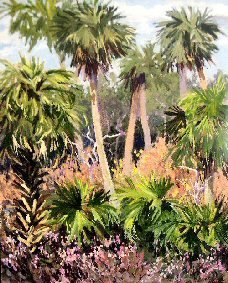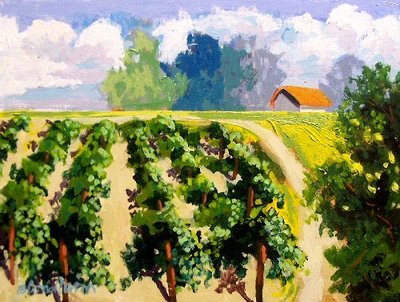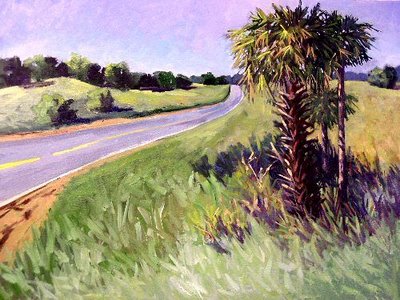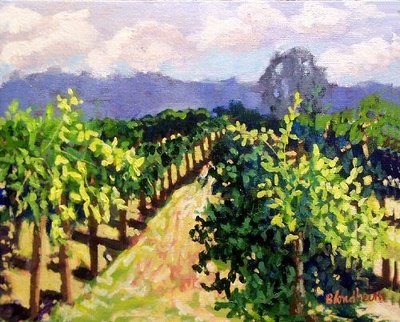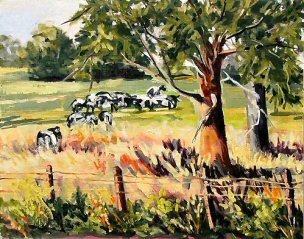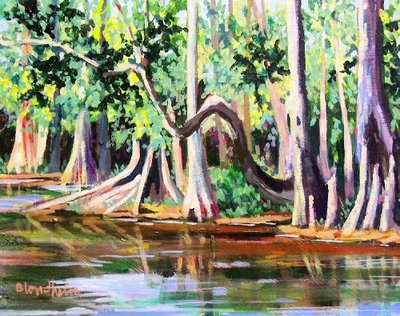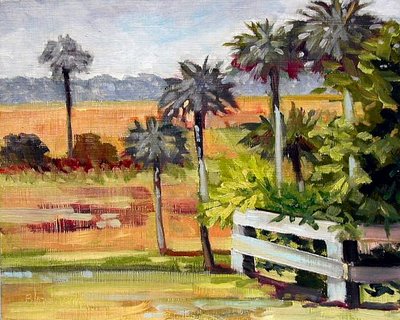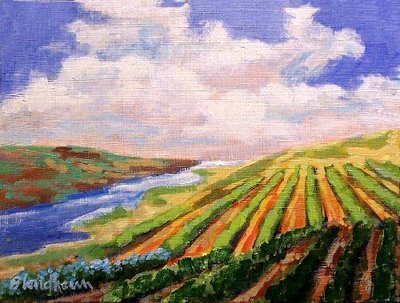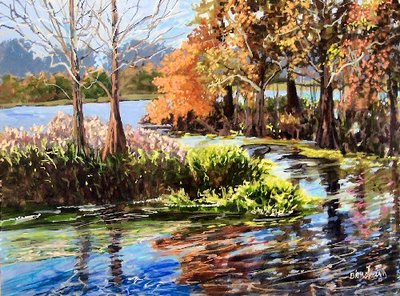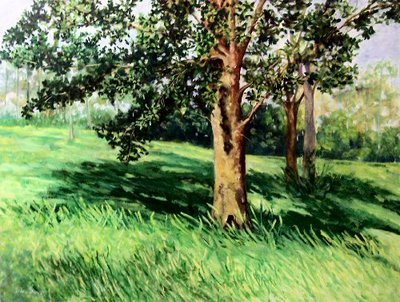
30x40 inches
oil on canvas
$2300.00
Purchase at: http://www.lindablondheim.com/gallery.php
Painters TipI am judging a couple of big art shows this month. I have a few suggestions for you artists who do festivals. I go around incognito often before I start to judge, to look at work and talk to artists.
Always greet people when they come to your booth. You don't need to talk a lot unless they are receptive, but don't ignore anyone. I hate to walk in a booth and be ignored.
Have a statement about your work in the booth for people to read. Talk about your process and include photos of the process if it needs some explanation.
Dress in clean, presentable, comfortable clothing. Don't be a slob.
Don't overload your booth with too much work. Leave some space around the paintings so that they are shown well. This is one thing I see constantly, a jumble of work stacked frame to frame. It is nearly impossible to enjoy the work presented that way. Keep plenty of paintings behind your booth to show interested buyers but you will interest them much more by allowing them to see individual works, uncrowded.
Place your largest or best work in the most prominent location, the center back of the booth and don't crowd it. You need a star to draw people into your space.
Make your booth neat and tidy. Don't leave boxes and packing materials around in the booth.
It's nice to have soft music in the background with a portable radio. Smooth Jazz is a good idea or classical, played low.
You can also have a bowl with hard wrapped candies to give out, like peppermints.
An incense stick burning in the back of the booth is also nice but make it a light scent like vanilla or lavender.
Have plenty of promotional flyers or brochures/biz cards to hand out to interested people but only give them out to people who are really interested.
Be sure to have a mailing list sign up sheet which asks for emails and postal mail addresses.
Above all, making guests welcome in your temporary home is important. They will want to stay longer if it is attractive and they are treated with grace.





